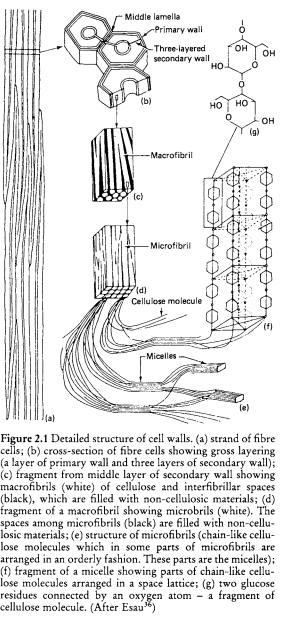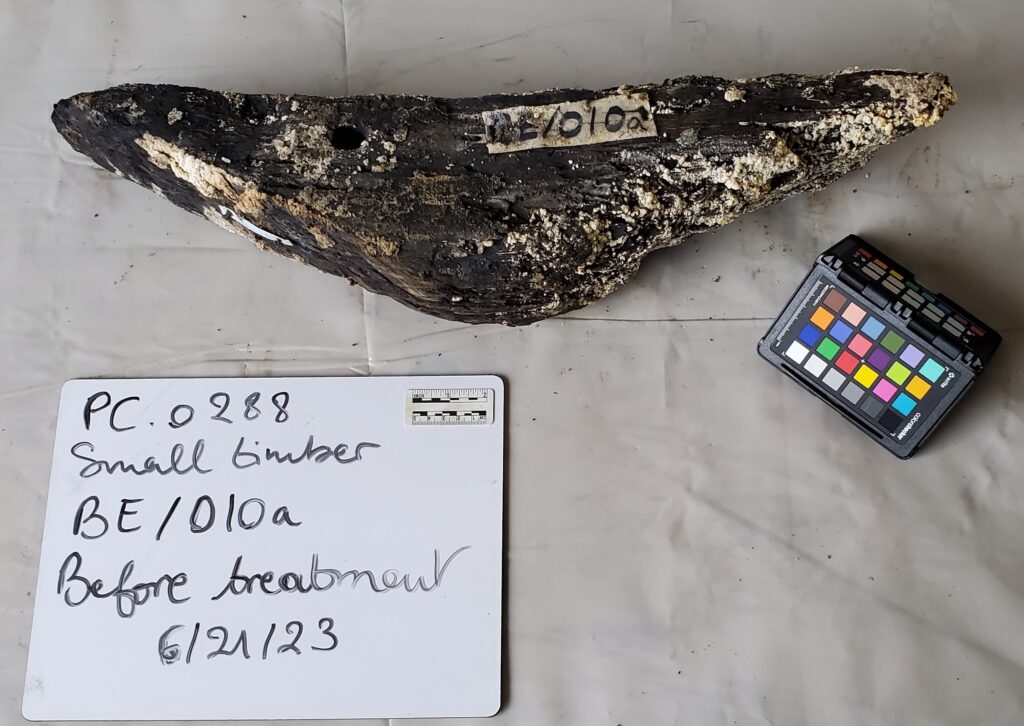
Hello, my name is Ariel McIntyre, I am an intern aiding in the Princess Carolina relocation project 2023. My internship is generously funded through The Bronze Door Society. I am here to educate myself on the works of a conservator as I start out my career, and currently I seem to be specializing in waterlogged archaeological organic objects. Which is a fancy way of saying, soggy wet mushy stuff that comes out of the ground or water. Or both!–If I am lucky. And conserving them takes a special amount of care.
This post will focus more on wood, though the material and methods I will be discussing could be used on leather, textiles, and other organic material. Things that were alive but now…aren’t… Anyway, metal is an entirely separate process to deal with when it has been sitting in water for a long time. I recommend reading blog posts about the USS Monitor projects as The Mariners’ Museum Conservation team have treated many wet metal artifacts. Here are a few examples: Gun Boring? No! Gun fascinating! and Desalination: Because rust never sleeps.
Organics that have been sitting in water for a long time become waterlogged, which is not necessarily the same as something being wet. Waterlogged means that an object is so heavily saturated with water that it has compromised the internal structure of the object (Broda and Hill 2021). Leaving the object out to dry when it is waterlogged can cause further deterioration.
Take wood for example. Wood is made up of tiny cells that hold up its shape, kind of like scaffolding in a skyscraper.

When left in water for a long time, the water will gradually eat away at the cell walls and take its place holding up the structure of the wood. This process is called hydrolysis, where water molecules work to break apart chemical bonds (Florian 1987). Once this happens, the wood is said to be “waterlogged”.
When you take that waterlogged piece of wood out of the water, and leave it in the open to dry, the water will evaporate out of it and leave nothing to hold up the structure of the wood. This causes the wood to shrink, crack, distort and/or bend during drying (see short film from The Leibniz Research Institute for Archaeology and The Bavarian State Archaeological Collection in Munich).
To prevent this from happening, conservators will use a bulking material to fill in the gaps the water has left and reduce drying stress.The most common bulking material that is used is called polyethylene glycol or PEG, for short.

Polyethylene glycol is a misnomer however, it is actually polymerized from ethylene oxide (Grattan and Clarke 1987). The better term for it would be polyethylene oxide, though polyethylene glycol seems to have stuck. It can be found in many common day items, such as hand lotion or antifreeze. Have a look at the ingredients in your bottle of shampoo and check to see if it has PEG in it. Don’t worry! It’s perfectly safe.
There are other bulking materials used though not as common or effective as PEG. It is commonly used in conservation for its physical properties. It is odorless, colorless, inert, non-toxic, and non-volatile. It is soluble in water and other organic solvents like benzene, meaning it is theoretically reversible and this quality is highly desired in the conservation field. Reversibility allows for conservators the future option to replace an old obsolete treatment with a better adapted, up-to-date method. PEG can be sprayed, or the objects can be placed in a bath. The application process will vary depending on the circumstances, shape, and thickness of the object (Grattan and Clarke 1987).
As an example, if placing a waterlogged log into a bath of PEG, it will slowly seep into the wood as the water filters out, replacing water as its structural support. This takes time and several baths, changed every few months depending on the object.
There are several factors that affect the application process of the wood. For one, its degree of degradation. If the wood is falling apart, it may need to soak longer than others. The larger and thicker the object, the longer it takes for the PEG to set in. There are different types of PEG used for different objects depending on their size, thickness, and preservation degree. They are different in their molecular weight, and can affect how they penetrate the wood.


Things like a wooden door knob might only need to soak in a few baths of PEG for a few months. An entire ship will take years.
If you have ever visited a preserved ship, you will likely have seen PEG seeping out of the wood. It is generally white or yellow waxy substance sitting on the surface of the wood.


I am currently working on Princess Carolina, and a part of our cleaning project has been removing some of that excess PEG from the surface of each timber. You can learn more through my other blog post written with Jules Mileski: ‘Princess Carolina Protection Program: the documentation, relocation and retreatment of a 300 year old ship in pieces’ as well as in this blog written by Christina Atland called: ‘Saving Princess Carolina: Acidification Research and Future Treatment Options’
While I discussed wood in this blog, PEG can be used for other organics such as leather, furs, bone, textiles, and others. Waterlogged organic objects should not be left out to dry without intervention if the goal is conservation. Using a bulking agent, such as PEG, minimizes the stresses induced during the drying process and helps maintain its original shape. While PEG is the main method of conserving waterlogged wood currently, there are others and more research is underway to find more reversible, less hygroscopic options.
References:
Broda, M., & Hill, C. A. (2021). Conservation of waterlogged wood—past, present and future perspectives. Forests, 12(9), 1193.
Florian, M. E. (1987). Deterioration of organic materials other than wood. In Conservation of marine archaeological objects (pp. 21-54). Butterworth-Heinemann.
Grattan, D. W. (1987). Waterlogged wood. In Conservation of marine archaeological objects (pp. 55-67). Butterworth-Heinemann.
Grattan, D. W., & Clarke, R. W. (1987). Conservation of waterlogged wood. In Conservation of marine archaeological objects (pp. 164-206). Butterworth-Heinemann.
Hocker, E. (2018). Preserving Vasa. Archetype Publication.
Reiss, W. (2023). Studying the Princess Carolina: the anatomy of the ship that held up Wall Street. Texas A&M University Press.